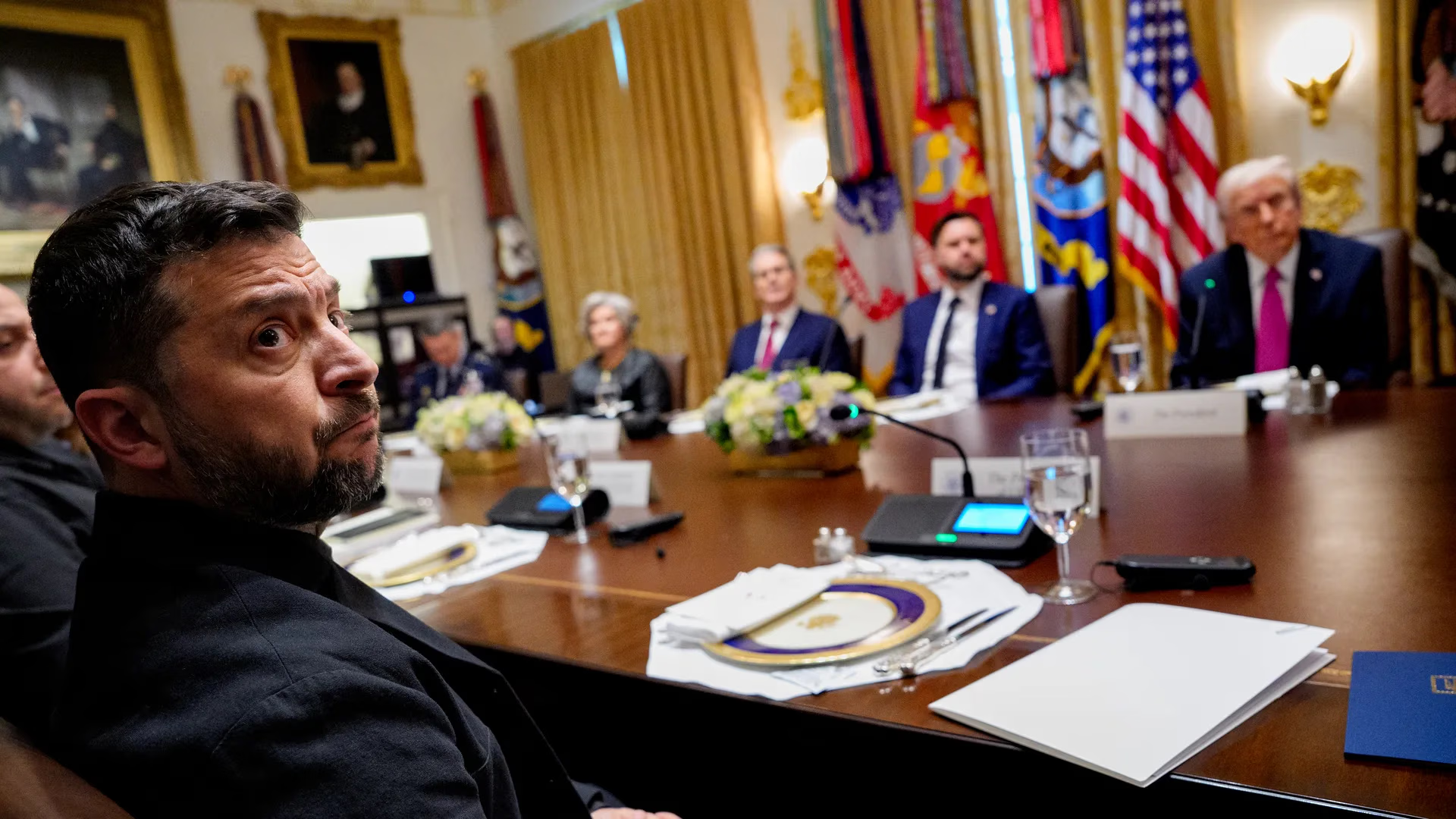On October 17 in Washington, Donald Trump and Volodymyr Zelensky held a meeting described as tense and candid. The Ukrainian delegation had hoped to secure agreement on the delivery of long-range Tomahawk missiles, but Trump said he had no intention of approving new weapons and was betting on diplomacy instead. He argued that the war could be stopped “if both sides agree to stay where they are.”
The talks in Washington came shortly after Trump’s conversation with Putin, which, according to Axios, caught Zelensky off guard and signaled that the White House was seeking a direct deal with Moscow. The new meeting only reinforced that impression: instead of pledging new arms deliveries, Trump proposed a cease-fire that would freeze the existing front lines.
During the tense meeting in Washington on Friday, Donald Trump told Volodymyr Zelensky that he does not intend to provide Ukraine with long-range Tomahawk missiles—at least not for now. Two sources familiar with the talks confirmed the account.
According to them, Zelensky had expected to leave the U.S. capital with assurances of new weapons deliveries but encountered a very different attitude from the American president—just a day after his lengthy conversation with Vladimir Putin. Trump made it clear that he is now focused on diplomacy and sees the transfer of Tomahawks as a step that could jeopardize it.
One source described the meeting as “difficult,” another as “bad.” “No one raised their voice, but Trump was firm,” said the first source. According to the second, the president made several sharp remarks, and at times the atmosphere grew emotional. The talks, which lasted about two and a half hours, ended abruptly. “I think that’s all for today. We’ll see what happens next week,” Trump said, hinting at upcoming U.S.-Russia contacts. He plans to meet Putin in Budapest within the next two weeks.
During the meeting, Trump shared details of his conversation with the Russian leader. He stressed that current U.S. proposals envision ending the war by maintaining existing front lines—a scenario difficult for Kyiv to accept. After the talks, Trump hinted at this position in a post on Truth Social, calling the meeting “interesting” and “friendly.” He wrote that he told both Zelensky and Putin: “It’s time to stop where they are. Let both claim victory, and history will decide.”
Afterward, Trump departed for Mar-a-Lago without taking questions from reporters. The White House declined to comment.
Zelensky, meanwhile, held a videoconference with European leaders. One participant said many of them were puzzled by Trump’s apparent shift in tone. Shortly after the call, European capitals began issuing coordinated statements of support for Ukraine—a sign that the Washington meeting had not delivered the expected outcome.
At a press briefing, Zelensky confirmed that the issue of Tomahawks was discussed but noted that both sides had agreed not to raise it publicly to avoid escalation. Asked whether he still hoped to receive the missiles, Zelensky replied, “I’m a realist.” According to Axios sources, the Ukrainian president pressed for the deliveries, but Trump remained firm.
During the call with European leaders, U.K. Prime Minister Keir Starmer proposed working with the United States to draft a peace plan for Ukraine modeled on Trump’s 20-point proposal for Gaza. NATO Secretary General Mark Rutte suggested holding an emergency meeting of allied national security advisers over the weekend.
According to the head of Zelensky’s office, the main goal of the visit was to secure concrete commitments from Trump on weapons—not only Tomahawks but other systems essential to Ukraine. Trump made no such pledges.
